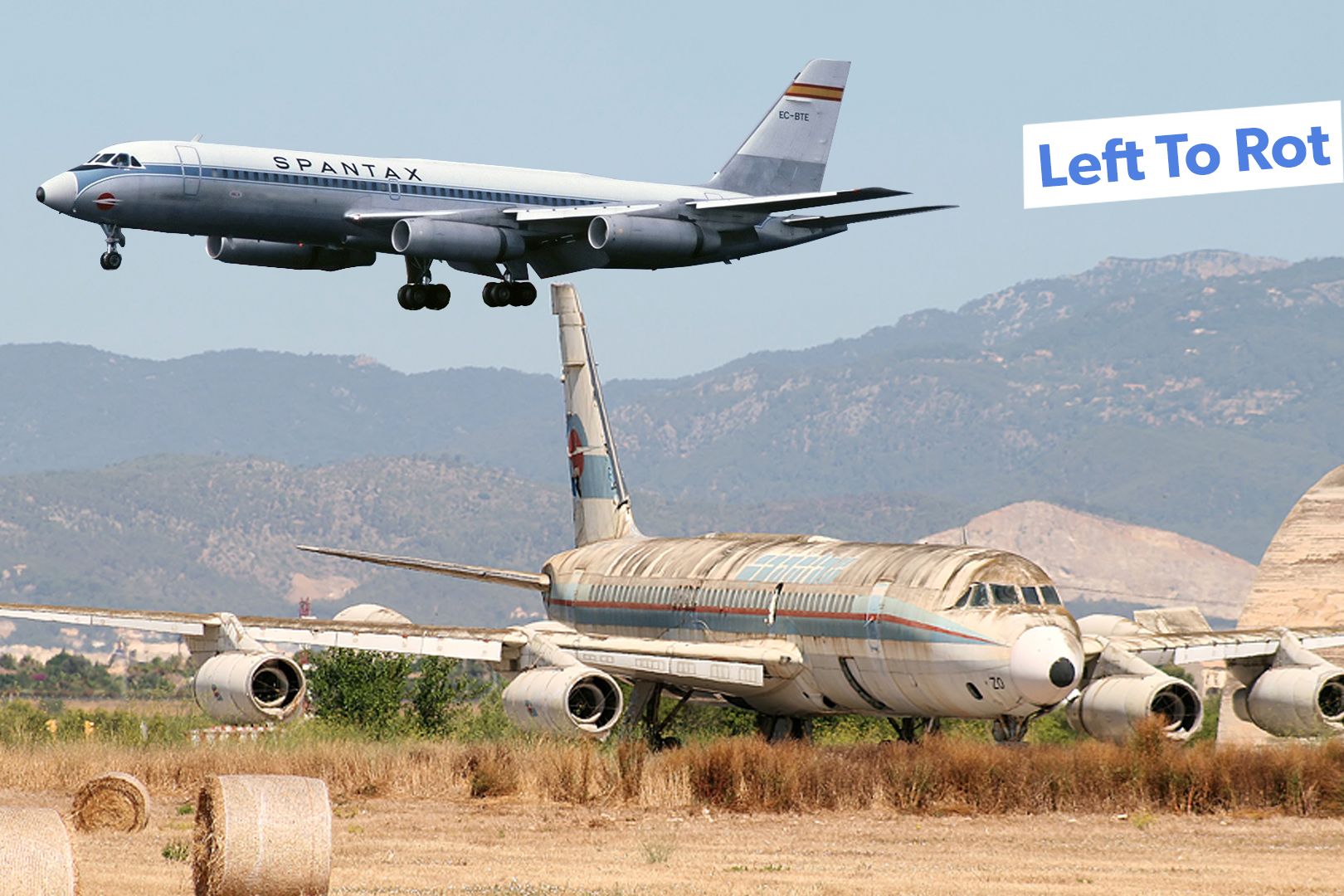Summary Spantax operated Convair 990s and one is preserved at Palma de Mallorca Airport, attracting aviation enthusiasts. The Convair 990 was not widely popular but could transport 149 passengers at high speeds. Spantax's purchase of 14 Convair 990s led to financial struggles that eventually led to the airline's collapse.
Visitors to Palma de Mallorca Airport on the Spanish Mediterranean island of Mallorca and see a rare surviving Convair 990. Long before the passenger jet aviation industry was dominated by just Boeing and Airbus, other companies like Douglas, Fokker, Convair, and others built jet airliners. Convair's 880 and 990 were General Dynamics' answers to the Boeing 707 and the Douglas DC-8.

Convair's adventure into building jetliners was a disaster for the company, and afterward, General Dynamics (the parent company) gave up building aircraft. Spantax Convair CV-990A - EC-BZO Spantax was a Spanish airline that operated between 1959 and 1988. It was one of the first Spanish airlines to focus on international tourist charter flights to popular Spanish holiday destinations (e.
g., Palma on Spain's Balearic Islands). The airline is regarded as one of the early drivers of developing 20th-century mass tourism in Spain.
Among other aircraft, Spantax operated 14 Convair 990s (of which two were written off after crashes). Today, one of the defunct Spanish carrier's Coronado jets, registration EC-BZO, is still parked at the Palma de Mallorca Airport (PMI), a treat for aviation enthusiasts. It’s the last survivor of the airline’s previous 14 and currently sits at the very end of a military area just south of the more inland side of runway 24R/06L.
Spain's preserved Convair 990 at Palma Airport (per Planespotters.net ) Final registration: EC-BZO Delivered (to American Airlines): 1962 Operators: American Airlines, MEA - Middle East Airlines (leased from AA), Spantax Production site: San Diego Age: 62.5 Years Location: Palma de Mallorca Airport (PMI) Unfortunately, it’s not in the best of condition.
According to Airways , being just one of two Coronados surviving in Europe, it was defined as a “Cultural Asset” under the Protection of the Balearic Islands in 2011. While this has helped the Coronado receive minor restoration work over the years, mainly through community contributions and use for filming, much of the aircraft still needs work. The front of the aircraft has been sanded and painted, looking fresh; its cabin has also been cleaned and maintained.
However, much of the rear two-thirds of the fuselage, including wings, engines, and tail, seem to have taken a good beating by the elements. Community members are still active and attempting to garner support, hoping to eventually restore Spantax’s last Convair 990 Coronado. It’s been 40 years since the disastrous runway overshoot of McDonnell Douglas DC-10 in Spain, which left 110 people injured, and took the lives of 50.
Convair 880 & 990 Convair was General Dynamics's aircraft-producing division, and over its lifetime, it produced some remarkable aircraft (including the Convair B-36 Peacemaker). During World War II and the early Cold War period, Convair was a major US aircraft contractor. As the Jet Age dawned, Convair wanted a piece of the pie, so it built the Covair 880 jetliner and its stretched Convair 990 Coronado variant.
The Convair 880 flew in January 1959 and was introduced to Delta Air Lines in May 1960. Despite its superior speed, the Convair didn't prove popular. Only 65 Convair 880s (the last were retired in 1998) and 37 Convair 990s were built.
The main operators were Delta Air Lines, Japan Airlines, Trans World Airlines, and Swissair. Although the Convair 990 did not match the capacity of Boeing and Douglas’ offerings, it could transport up to 149 passengers, 39 more than its predecessor. As promised, it delivered speeds of Mach 0.
84 (896 km/h | 484 knots). Still, it was not widely popular, and the few airlines that did fly a Coronado included Swissair, Varig , and Spantax, a previously major European leisure/holiday charter airline with hubs on the major airports serving Mallorca and the Canary Islands. Production for the Convair 880 was terminated in 1962 and the Convair 990 followed in 1963.
The aircraft was well spotted across the globe. “King of the Coronados” Established by an ex-Iberia pilot, Spantax initially grew its fleet during the first half of the 1960s with various Douglas aircraft, such as the DC-3, -4, -6, and -7 (not specifically in that order). Although the carrier hoped to dive into the jet age by adding the DC-8 to its lineup of Douglas planes, the cost was too steep.
Fortunately, there were Convair 990s to go around. Spantax purchased 14 from American Airlines and Swissair, which is impressive since the manufacturer only built 37 of them. Spantax airline: Operated: 1959 to 1988 Headquarters: Madrid, Spain Hubs: Gran Canaria Airport, Palma de Mallorca Airport Notable aircraft operated: Douglas DC-3, -4, -5, -6, -7, -8, -9, -10s, Convair CV-990s, Boeing 737-200, Douglas C-47 Skytrain Notable accidents: Spantax Flight 995 in 1982 (50 fatalities), Spantax Flight 275 in 1972 (155 fatalities), Convair 990 crash at Stockholm 1985 (5 fatalities) Unfortunately, the cost of keeping the airline afloat and fuel for the very thirsty Coronados began to take a toll on the once-prominent Spanish carrier.
After a round of layoffs and a fatal incident during the early 80s, passenger numbers plummeted, and attempts by management and the Spanish government could not save Spantax. Fortunately, most previous employees quickly found work elsewhere in the industry; and one unique airliner also found life following the airline’s collapse. Have you ever flown with Spantax or on a Convair 990? Let us know in the comments below.
.



















